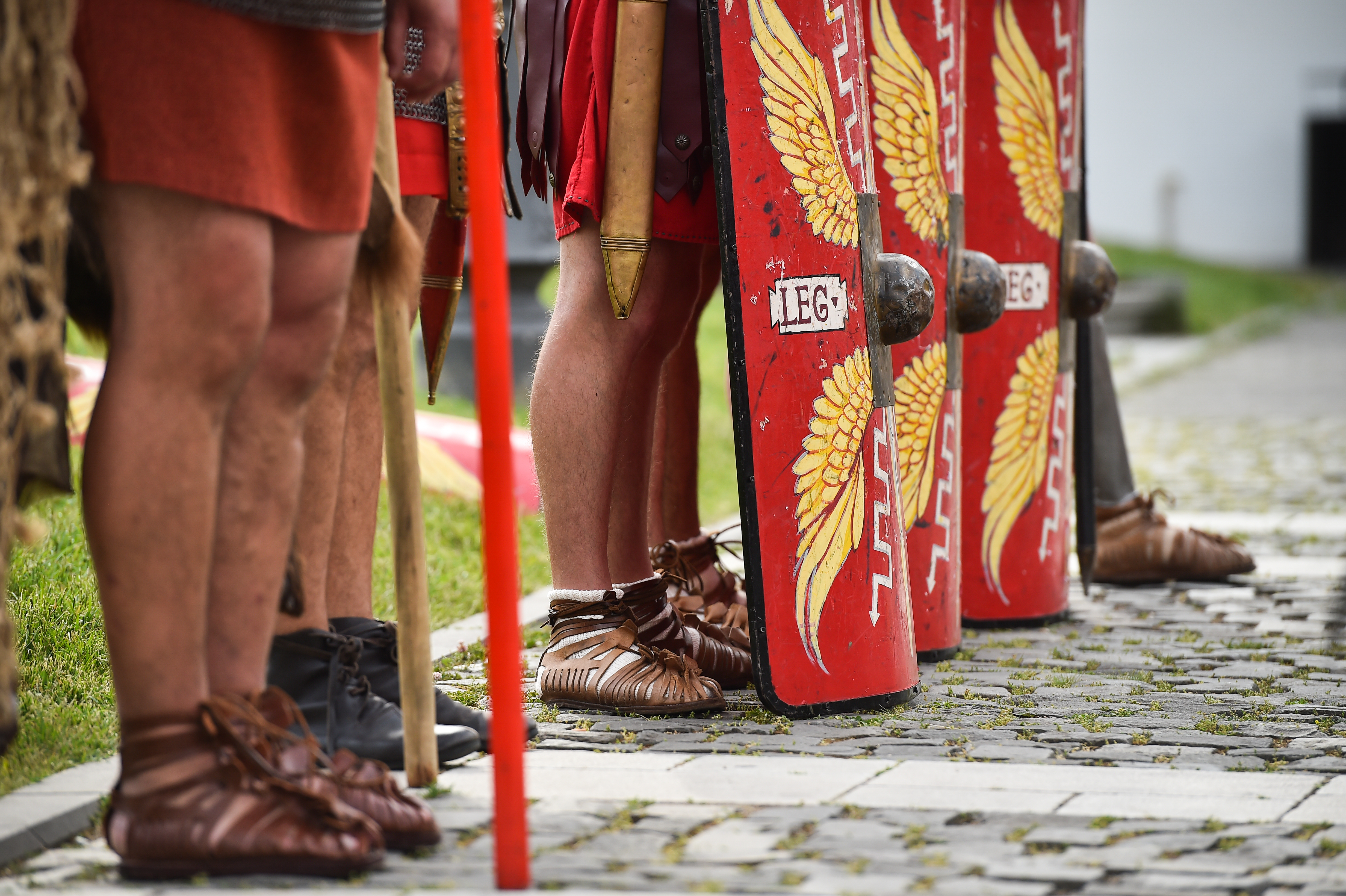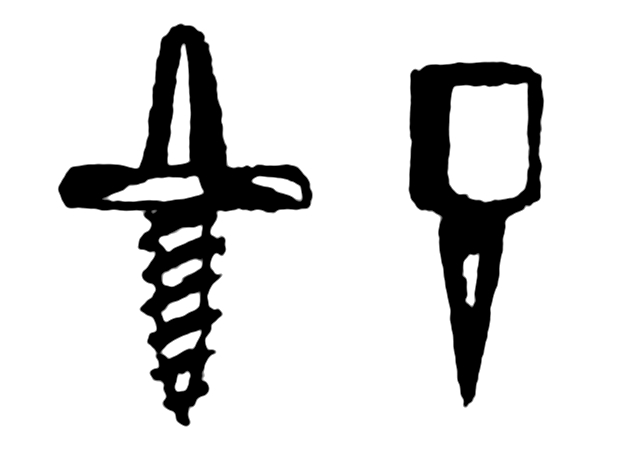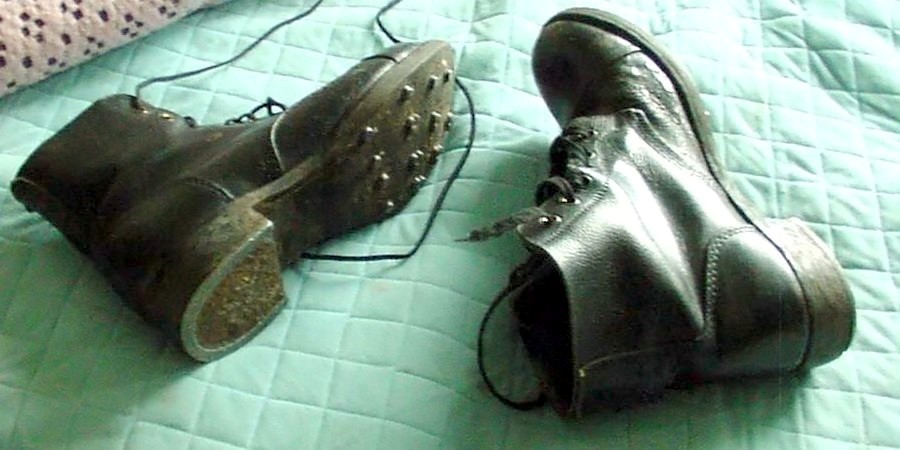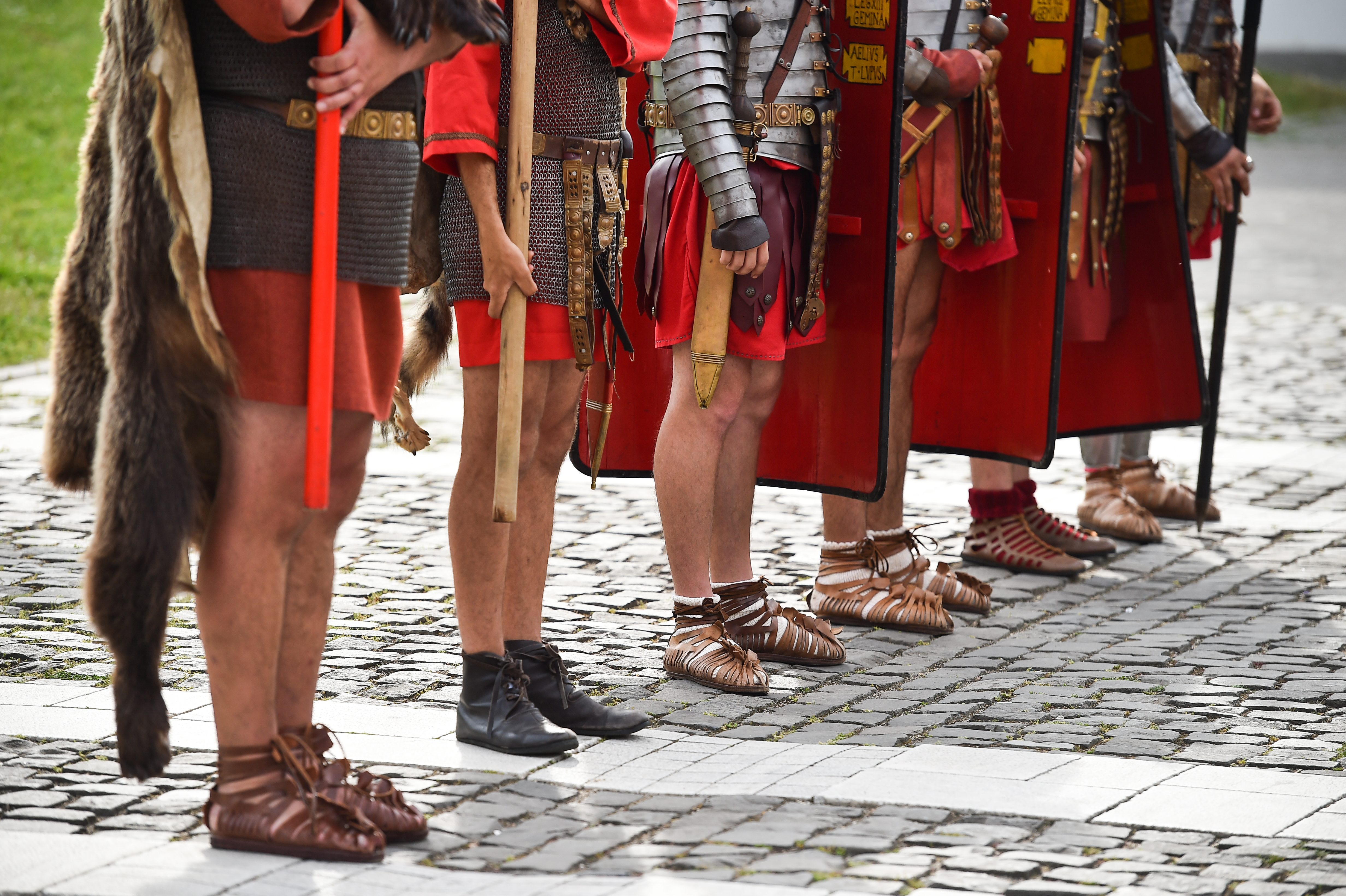
Legionnaires in the Roman army wore marching boots, called caligae (singular caliga). These may appear to be merely an open sandal. However, they were sturdy enough to wear all day, every day, even on long marches.
A thick lower sole would be attached to a mid sole with hobnails. This added strength to the boot and increased its durability. (I don’t know enough about shoe construction but that is the comment made by several sources.)

For a conception of what hobnailed Roman caligae might look like, consider this photo of a hobnailed boot of the U.S. Union Army. The boot is thus circa 1861 to 1865.

The upper would have an insole and attached leather straps cut from one piece of leather. The upper would be sewn onto the mid and lower soles. The straps would be laced together, completing the strong shoe.

These marching boots would be durable enough to wear on a long campaign. The hobnail would give good traction in sand, dirt, or rough surfaces. Several comments I read claim the laced up straps would give good ankle support.
In the warm climate of the Mediterranean, the open sandal would be comfortable. In northern climates, say while on duty in Germany or England, Roman soldiers would wrap their feet in large pieces of wool or linen to stay warm.

The third and fourth of the above re-enactors have their feet wrapped for extra warmth.
The second soldier is wearing carbatina, a closed shoe design, which Wikipedia reports was the most common footwear by end of 4th century.
Update: The ancient historian Josephus tells of a time when those fabled Roman hobnail sandals led to the death of a brave Legionnaire. The tale is from War of the Jews – Book VI, Chapter 1.
This quote is from the 1737 translation by Prof. William Whiston. So, I am confident in concluding this has long since passed into public domain.
For context, this happened during the Roman siege of Jerusalem. The Romans had breached the city walls and were trying to breech the Temple. The story shows the downside of hobnail boots, the defensive value of a scutum and lorica segmentata, along with the fighting spirit of a Roman legionnaire.
Josephus explains…
8. But there was one Julian, a centurion, that came from Bithynia; a man he was of great reputation; whom I had formerly seen in that war; and one of the highest fame, both for his skill in war; his strength of body; and the courage of his soul. This man, seeing the Romans giving ground, and in a sad condition: for he stood by Titus at the tower of Antonia: leaped out, and of himself alone put the Jews to flight, when they were already conquerors; and made them retire as far as the corner of the inner court of the temple.2 From him the multitude fled away in crowds: as supposing that neither his strength, nor his violent attacks could be those of a mere man. Accordingly he rushed through the midst of the Jews, as they were dispersed all abroad, and killed those that he caught. Nor indeed was there any sight that appeared more wonderful in the eyes of Cæsar, or more terrible to others, than this. However, he was himself pursued by fate; which it was not possible, that he, who was but a mortal man, should escape. For as he had shoes all full of thick and sharp nails; as had every one of the other soldiers; so when he ran on the pavement of the temple, he slipped, and fell down upon his back with a very great noise which was made by his armour. (3) This made those that were running away to turn back. Whereupon those Romans that were in the tower of Antonia set up a great shout, as they were in fear for the man. But the Jews got about him in crowds, and struck at him with their spears, and with their swords, on all sides. Now he received a great many of the strokes of these iron weapons upon his shield, and often attempted to get up again: but was thrown down by those that struck at him. Yet did he, as he lay along, stab many of them with his sword. Nor was he soon killed; as being covered with his helmet, and his breast-plate, in all those parts of his body where he might be mortally wounded: he also pulled his neck close to his body, till all his other limbs were shattered, and no body durst come to defend him; and then he yielded to his fate. Now Cæsar was deeply affected on account of this man of so great fortitude: and especially as he was killed in the sight of so many people. He was desirous himself to come to his assistance: but the place would not give him leave. While such as could have done it, were too much terrified to attempt it. Thus when Julian had struggled with death a great while; and had let but few of those that had given him his mortal wound go off unhurt, he had at last his throat cut, though not without some difficulty: and left behind him a very great fame; not only among the Romans, and with Cæsar himself; but among his enemies also.
2 Court of Israel.
(3) No wonder that this Julian, who had so many nails in his shoes, slipped upon the pavement of the temple; which was smooth, and laid with marble of different colours.
By the way, that siege of Jerusalem turned out rather badly for the Jews who fled there to hide. Josephus reports the toll was 1,100,000 killed and 97,000 taken away into slavery. For additional discussion, check out Some background on brutality of ancient wars before diving into Viking history – 1 of 2.
More discussion of weaponry of Roman Legionnaires.